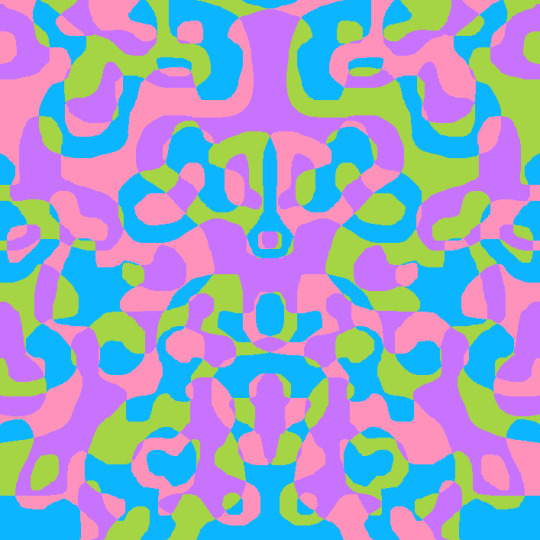#nonobjective art
Explore tagged Tumblr posts
Text

7 notes
·
View notes
Text

"Thrax Capers"
by AXIS
6x9" prismacolor on artagain
Entirely freehand
$200 matted and framed
2 notes
·
View notes
Text


Bird time
#lu's art#matt and bird break loose#I normally do nonobjective backgrounds but I decided to a quick scenic one for this :)#furry tag
3 notes
·
View notes
Text
director's commentary for this post (lmao) because I like yapping
the reason why I choose these artworks is not just because they looked good, I thought it was interesting how they treat colors, light and rot
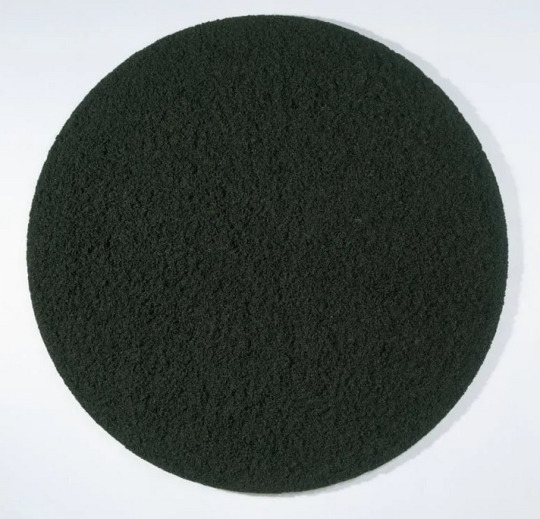
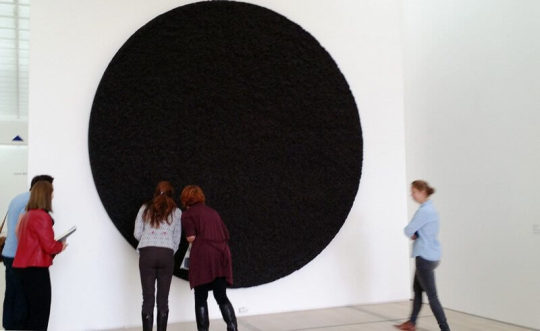
Damien Hirst's Black Sun is made of many dead flies, people have said that this artwork smells gross up close. Its theme is obviously death and disgust (like most of his works), he has also said the flies represent people, and quotes Hobbes saying that people's life without a government is bad and tragic (which I HEAVILY disagree with)
Hirst sells his works for millions of dollars, it's highly commercialized, some have accused him of money laundering and such. Insert the Wompty-Dompty Dom Centre thought:
Problem It's Wednesday evening and something heinously exciting is under way. People have gathered beneath the billowing roof of an oddly shaped trophy building, sipping wine and exchanging opinions. 29-year-old wunder-twins Guy and Keith Joost are the stars of the show, with their bomber jackets and white sneakers -- head curators of this art exhibition. It's the wompty-dom-di-dommiest event of the year and all the cool kids have RSVP’d. Where are you, if you are not there? Solution You're at home, stupid cop, not with the art crowd. You hate them, everyone hates them, even they hate themselves. It's nauseating -- an industry built on sprezzatura and sparkling wine. And, let’s be honest, tax evasion schemes. The Wompty Dompty Dom Centre is the heart of this unholy symbiosis of esthetics and tax optimization, and now that you've internalized it – you can have a piece too!
personally, for me, it invokes disgust both on an aesthetic level (dead flies) and in a conceptual level (rich guy using death to make millions). Tieing this into black being the color of money in Elysium, and the end of the world.

Malevich's Black square is a painting without an object, it doesn't represent the material world, it is independent of it. but at the same time, black is the density of matter in the white empty space.
He said this about this art: "[Black Square is meant to evoke] the experience of pure non-objectivity in the white emptiness of a liberated nothing." "It is from zero, in zero, that the true movement of being begins." (x) ‘In the year 1913, trying desperately to free art from the dead weight of the real world, I took refuge in the form of the square.’ (x)
Important context for this work (like many other black paintings) is that it was made around the time of the world wars, and the russian revolution. Black paintings express the trauma of the world wars, and in this case the revolutionary approach to art too.
quoting from the article I linked:
Malevich had been collaborating with the musician Mikhail Matyushin and the poet Aleksei Kruchenykh on a manifesto which called for the rejection of rational thought. They wanted to overturn the established systems and hierarchies of Western society. Together with poet Velimier Khlebnikov they staged Victory over the Sun, where the characters aimed to abolish reason by capturing the sun and destroying time. The libretto used Kruchenykh’s zaum – a new language of sounds that had no meaning. This sparked something in Malevich.

Similar things apply to White on white. The Moma website describes it better than I would:
[Malevich] "wanted White on White to create a sense of floating and transcendence. White, Malevich believed, was the color of infinity and signified a realm of higher feeling, a utopian world of pure form that was attainable only through nonobjective art. Indeed, he named his theory of art Suprematism to signify “the supremacy of pure feeling or perception in the pictorial arts”; and pure perception, he wrote, demanded that a picture’s forms “have nothing in common with nature.” In 1918, soon after the Russian Revolution, the connotations of this sense of liberation were not only aesthetic but also social and political. Malevich expressed his exhilaration in a manifesto one year later: “I have overcome the lining of the colored sky. . . . Swim in the white free abyss, infinity is before you.”

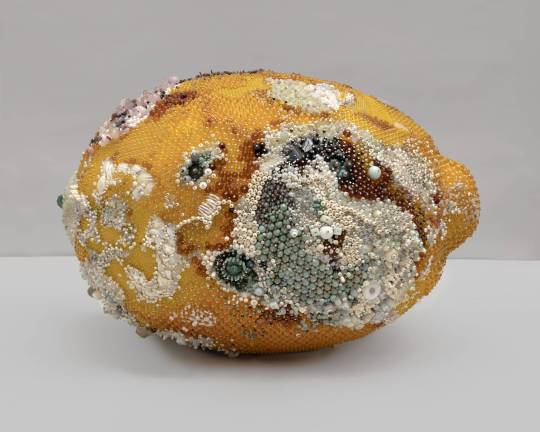
These molding fruits made out of gemstones by Kathleen Ryan make me think of Damien Hirst's bedazzled Skull artwork, decadence, kitsch, death. The gemstones make the mold feel like it has value, importance, like it's almost sacred. The pale as a "sacred and terrible smell"

Rothko's paintings heavily empathize colors, paintings like these invite us to really experience those colors and be moved by them.
From the Disco Elysium artbook:
Eyes are direct, unmediated input to the brain. You like or dislike something before you have a chance to reason about it. It affects you emotionally without offering you a chance to throw up intellectual defenses first. Witnessing death and good art are materially equivalent experiences: they are visual information transmitted straight to the centers of emotion by way of the eye. This might explain why a person could tear up in the presence of a Rothko painting. If you’re a sensitive enough instrument, seeing his Orange, Red, Yellow in real life feels intense. It doesn’t work on a computer screen though, you’re just staring at some bright pixels imitating the appearance of the painting the same way seeing a dead person is different from seeing a picture of a dead person.

El Lissitzky was also an important figure in russian avant-garde, like Malevich. Well. I put this one in here cause it looked nice and because of the theme of light and the lack of (it's a gelatin silver photograph).
maybe this adds something to the discussion of the symbolism of colors and light in Elysium
#long post /#I love art history and talking about art so much#what do i tag this#its going into my#de meta#tag
74 notes
·
View notes
Text








Kim Matthews and I have been virtual friends forever, we often chat under different posts, but I never knew that she was born in Alaska, grew up and studied in Maine, and has been living in Minneapolis, since 1984.
Kim's objects give a happy feel - surfaces, colours, shapes... all form the basis of understanding of art, when the childhood curiosity combines surprise, recognition, mystery and delight.
Kim tells: " I deploy a handmade geometry and tactile surfaces to otherwise simple, serially based forms to engage viewers in intimate, close looking.
My sculptural objects are often surfaced in saturated colors and drawn patterns, evoking personal formative experiences of the popular-culture design objects of the 1960s and 70s, which inspired a desire to make domestic, exuberant art to be lived with and loved as companions."
https://www.altiba9.com/artist.../kim-matthews-pop-sculpture
20 notes
·
View notes
Text
I Paint What I Want to See by Philip Guston

To paint is always to start at the beginning again, yet being unable to avoid the familiar arguments about what you see yourself painting. The canvas you are working on modifies the previous ones in an unending, baffling chain which never seems to finish. (What a sympathy is demanded of the viewer! He is asked to 'see' the future links.)
For me the most relevant question and perhaps the only one is, 'When are you finished?' When do you stop? Or rather, why stop at all? But you have to rest somewhere. Of course, you can stay on one surface all your life, like Balzac's Frenhofer. And all of your life's work can be seen as one picture — but that is merely 'true'. There are places where you pause.
Thus it might be argued that when a painting is 'finished', it is a compromise. But the conditions under which the compromise is made are what matters. Decisions to settle anywhere are intolerable. But you begin to feel as you go on working that unless painting proves its right to exist by being critical and self-judging, it has no reason to exist at all — or is not even possible.
The canvas is a court where the artist is prosecutor, defendant, jury, and judge. Art without a trial disappears at a glance: it is too primitive or hopeful, or mere notions, or simply startling, or just another means to make life bearable. (pp. 27-28)
***
I have a studio in the country — in the woods — but my paintings look more real to me than what is outdoors. You walk outside; the rocks are inert; even the clouds are inert. It makes me feel a little better. But I do have a faith that it is possible to make a living thing, not a diagram of what I have been thinking: to posit with paint something living, something that changes each day. (p. 30)
***
Frustration is one of the great things in art: satisfaction is nothing. (p. 31)
***
And one of the great things, just to talk about this one point of the work of Piero and its inspiration for modern painting, revolves really around this whole thing of what we call the picture plane.
I know that that term is taught in most art schools and is always put down as first principles that you talk about. But I've discovered that what they mean by that usually is surface. Now that's the last thing in the world that I mean, that I think we're talking about. Because, in many minds, in thinking about painting, this rectangle on which we project an image or our expression of a non-image, a nonobject image, is a surface upon which you can make a fixation of some kind of configuration. Well, that is not what I mean by the picture plane, because the picture plane, as I'll point out to you later when we show some slides, doesn't exist factually. Per se. That is to say, it's not a physical thing. It's not a material surface. It's totally an imaginary place, plane, which has to be created by illusions. (p. 54)
***
I'm showing you Giotto because it's another thing completely. And I don't believe in historical progress. That is to say, I wouldn't agree with the theory that art advances, that Giotto did this because he couldn't do the other, and then you have, of course, a series of advances, one thing leads to another. I don't think that's the way it works. I think that each artist is himself. In that sense, I would take an antihistorical position in relation to creation. (p. 73)
***
And some of you may think, 'Well, why all these changes?' Or note the fact that there are many changes. It's taken me years to come to the conclusion, or to the belief, that probably the only thing one can really learn, the only technique to learn, is the capacity to be able to change. And it's a very difficult thing. But as modern artists that's our fate, constant change. I don't mean novelty or anything like that. What I mean is that this serious play, which we call art, can't be static. I mean you have to keep learning how to play in new ways all the time. (p. 79)
***
Then things started happening in my painting that I felt more comfortable with. I might explain it this way: working with paint, having the least preconceptions of what I was going to do when I started putting on the paint. I mean, treating the act of painting very much as a process of interaction between you and the paint and the surface in front of you. A give-and-take, I mean to say, between feeling an urge for gray, an urge for red, just a blind urge, and putting it on. And then not knowing whether it's right, or not even caring about whether it's right, and doing something else. And then it spoke to you, and then you reacted. That kind of thing. In which case, you might say I gave up the idea of the masterpiece, you know? And began to see that taking out (many parts are simply erasures) was putting in. (pp. 85-85)
***
I was once on a panel with a group of artists: Ad Reinhardt, Motherwell, and so on. And Tworkov was on it, and we were all talking about how we worked, and Jack said he liked to leave the studio when he felt he had something to work on the next day. And I was shocked by that. I thought it was horrible. I was very critical of that attitude. I thought it was like promising yourself a goody. I mean, then you clean up and go out with friends for dinner and you feel good because you know you've got something to work up the next day. I was shocked because at this time either you did it at once or not. The thing you did then at that moment, that was it. So that the painting or the drawing was in fact an evidence, you might say, or a document or a record really, if you want to look at it that way, of the creative moment. And that's what I was really excited about. (p. 86)
***
And then reacting against that, with a very deep desire to paint tangible things. And it began with just the forms around me. I mean, my shoe on the floor. That's just the underpart of the shoe. Books. I did lots of shoes and lots of books. What's the matter? It's a book. I must have done about a hundred paintings of books. And lots of shoes. I focused on shoes and books. Lightbulbs. Just common things around. I wanted to wipe the whole slate clean. Get rid of art. In your office, Bob, there's a slogan that says: 'Forget about art, we're busy ...'?
BOB GREENE: A Grandma Moses quote.
PG: Grandma Moses, pretty good.
BG: 'Art means nothing. It's keeping busy that counts.'
PG: Keeping busy. I have a quote to match that, almost as good. By another primitive, John Kane. Remember John Kane, the Pittsburgh painter? He said, 'There's only one problem with painting and that's the ants.' Because when you paint, you'd be up on the hill painting the Monongahela River and the open-hearth plants, factories, the steel mills, and the only problem was the ants.
So at this time, I really felt like: The hell with art — pay attention. I mean, I would say, 'Just pay attention' And somehow I went through the mirror here. And then followed about two and a half or three years of just ecstasy. Just pure joy. After this period of struggle, this awful period of tug-of-war. (pp. 91-94)
***
AUDIENCE: How big is that?
PG: About five feet. It's one of the smaller ones.
AUD: How long did you work on that? Do you remember?
PG: On each one?
AUD: On this particular one.
PG: It was done in an hour and a half, two hours. Or thirty years. Either way you want to look at it. (pp. 95-96)
***
And of course, my very old and dear friend, Morty Feldman, I'd been telling him about this stuff when I'd come into New York, but he didn't want to come up to see it. Then finally he came up, and he was, I think, pretty upset. So, you lose friends.
But I think Baudelaire said, 'Second to the pleasure of surprising yourself is the aristocratic pleasure of surprising your friends. And I think I wanted my close friend Feldman to say, 'You mean that's you?' He was close to my work for twenty years. And I wanted to feel as if I was saying to him, 'You think you know me? You don't know me.' It's curious.
We could talk for hours about this whole resistance. I mean, we all have one or two people. Van Gogh had Theo. It doesn't matter. It can be one or a million. But you need one or two. That's who you paint for. And when they come in the studio, there's a certain look in the eye. And if they say it's beautiful, then you say, 'What do you mean it's beautiful? Why don't you say it's lousy?' But if they don't say it's beautiful and there's a certain look in their eye, that look is what you want. So, you don't just paint for yourself. You'd be insane if you just painted for yourself. I mean, that's insanity. So Van Gogh was not insane, really, because there was Theo. I mean, he might have been sick or something. He was an artist. So, there's always that problem of one or two dear people who are close to you. In love, aesthetically, in friendship, it's all the same, it's all connected. They get so close that you have to say, 'Get off. You don't know me. There's parts you don't know.' And so I'm just waiting for the day that Morty comes up and says it's fantastic. He will. (pp. 105-06)
***
. . . . When I'm painting it, if the image locks itself in there too quickly, or if I'm aware of it too much before I do it, then it's boring and I wipe it out. I mean, who the hell wants that? You'd rather have the image in your mind than just have to look at it, isn't that so? I'd rather think about something than actually see it. (p. 113)
***
You see, I think that creating is a double process. You have to be sophisticated as hell and innocent as hell at the same time. It's a real impossibility, but I think that's what it is. And I think that's what all the great ones would say, too. That's my theory. I'm really answering your question in a real sense, I think. No? So if you ask me what happens, do I think first and make a mark or make a mark and then think? I'm having a baby. I don't want to know that much about it. I just want to have that baby, you know what I mean? (p. 191)
***
I'll tell you what it is. What bores me is to see an illustration of my thought. That would bore me. I want to make something I never saw before and be changed by it. So that I go in the studio and I see these things up and I think, Jesus, did I do that? What a strange thing. And I like to feel strange. It's a personality thing. I like to feel strange to myself. The whole world's filled with things I know. But then, in working more with things, they don't have nouns, they don't have names, but they're things. Things get squashed, are pushing each other, and all that. I like that feeling. Things dent each other, they affect each other. So, when do I know I'm finished? It's when the drawing isn't padded. That is, it's not repaired or tickled. And where the line is alive. Where the line is making the form at the moment of the doing of it. I enjoy the feeling of the thing being caught at a very special certain moment. At a split-second moment the thing is caught, like it just came into existence. And it's about to change into something else, by the way. It's about to metamorphose into something else. I enjoy that. I don't like waxworks, for instance. You know, convictions about what I like. One could give a talk called 'What I Love and What I Hate'. Generalizations are terrible in art. (pp. 197-99)
***
If I speak of having a subject to paint, I mean there is a forgotten place of beings and things, which I need to remember. I want to see this place.
I paint what I want to see. (p. 253)
2 notes
·
View notes
Text





Calder was born in 1898, the second child of artist parents—his father was a sculptor and his mother a painter. In his mid-twenties, he moved to New York City, where he studied at the Art Students League and worked at the National Police Gazette, illustrating sporting events and the Ringling Bros. and Barnum & Bailey Circus. Shortly after his move to Paris in 1926, Calder created his Cirque Calder (1926–31), a complex and unique body of art. It wasn’t long before his performances of the Cirque captured the attention of the Parisian avant-garde. In 1931, a significant turning point in Calder’s artistic career occurred when he created his first kinetic nonobjective sculpture and gave form to an entirely new type of art. Some of the earliest of these objects moved by motors and were dubbed “mobiles” by Marcel Duchamp—in French, mobile refers to both “motion” and “motive.” Calder soon abandoned the mechanical aspects of these works and developed suspended mobiles that would undulate on their own with the air’s currents. In response to Duchamp, Jean Arp named Calder’s stationary objects “stabiles” as a means of differentiating them. Calder returned to live in the United States with his wife, Louisa, in 1933, purchasing a dilapidated farmhouse in the rural town of Roxbury, Connecticut. It was there that he made his first sculptures for the outdoors, installing large-scale standing mobiles among the rolling hills of his property. In 1943, James Johnson Sweeney and Duchamp organized a major retrospective exhibition at the Museum of Modern Art, New York, which catapulted Calder to the forefront of the New York art world and cemented his status as one of the premier American contemporary artists. In 1953, Calder and Louisa moved back to France, ultimately settling in the small town of Saché in the Indre-et-Loire. Calder shifted his focus to large-scale commissioned works, which would dominate his practice in the last decades of his life. These included such works as Spirale (1958) for the UNESCO headquarters in Paris and Flamingo (1973) for Chicago’s Federal Center Plaza. Calder died at the age of seventy-eight in 1976, a few weeks after his major retrospective, Calder’s Universe, opened at the Whitney Museum of American Art, New York. (Pace Gallery)
3 notes
·
View notes
Text
that last post reminds me that I don't think enough attention is given to the phenomenon of endogenous little dark age edits (ELDAE), a spontaneous vision of flickering, unrelated images, each filled with (probably illusory) detail that holds the attention
the locus classicus for eldae, in the exoteric literature anyway, is A Scanner Darkly
The scramble suit was an invention of the Bell Laboratories, conjured up by accident by an employee named S. A. Powers. He had, a few years ago, been experimenting with disinhibiting substances affecting neural tissue, and one night, having administered to himself an IV injection considered safe and mildly euphoric, had experienced a disastrous drop in the GABA fluid of his brain. Subjectively, he had then witnessed lurid phosphene activity projected on the far wall of his bedroom, a frantically progressing montage of what, at the time, he imagined to be modern-day abstract paintings.
For about six hours, entranced, S. A. Powers had watched thousands of Picasso paintings replace one another at flashcut speed, and then he had been treated to Paul Klees, more than the painter had painted during his entire lifetime. S. A. Powers, now viewing Modigliani paintings replace themselves at furious velocity, had conjectured (one needs a theory for everything) that the Rosicrucians were telepathically beaming pictures at him, probably boosted by microrelay systems of an advanced order; but then, when Kandinsky paintings began to harass him, he recalled that the main art museum at Leningrad specialized in just such nonobjective moderns, and decided that the Soviets were attempting telepathically to contact him.
In the morning he remembered that a drastic drop in the GABA fluid of the brain normally produced such phosphene activity; nobody was trying telepathically, with or without microwave boosting, to contact him. But it did give him the idea for the scramble suit.
i have experienced eldae myself a few times, usually hypnagogic, sometimes more abstract, sometimes more concrete (although it's part of the quality of the vision that you can't really tell), only lasting a few minutes, and not having the 'projected' open eye quality of Dick's vision. et contra Dick hypotheses non fingebam.
i think i vaguely recall some references to it in the esoteric literature, coded as the "storehouse of images" in yes🟣d or something, but nothing stands out.
what's remarkable to me is that it is exactly like other perihypnotic imagery i have experienced, and like other yesodic imagery expressed artistically by other people, presumably from eldae of their own, in that it is captured almost perfectly by early 2020s deep learning RRNs. i have seen montages produced by rrns, directed to interpret random vectors in latent space, with the exact sensibility of eldae, and of course the usual kind of ldae is drawing on that "schizo" sensibility too.
it must mean something significant that the faculty of the imagination is capable of carrying out, and has an (inducible? I don't really believe Dick's biochemobabble) tendency to fall into carrying out a similar random search of latent visual space.
6 notes
·
View notes
Text
Claire Falkenstein
youtube
Abstract sculptor Claire Falkenstein was born in 1908 in Coos Bay, Oregon. Falkenstein worked with a variety of materials including metal, ceramics, glass, and wood. An artistic innovator, she perfected a new technique for inserting colored glass into a webbed metal structure. She also created some of the earliest examples of nonobjective American sculpture. Falkenstein completed several large commissions in both America and Europe, including the gates to the Venice palace that now houses the Peggy Guggenheim collection. Her art can be found in several museum collections, including the Centre Pompidou, the Los Angeles County Museum of Art, and the Smithsonian American Art Museum.
Claire Falkenstein died in 1997 at the age of 89.
5 notes
·
View notes
Quote
Nonobjects are currently entering our environment from all sides and displacing objects. I call nonobjects information. Today we are in the transition from the age of objects to the age of nonobjects. Information, not objects, now defines our environment. We no longer occupy earth and sky but Google Earth and the Cloud. The world is becoming progressively less tangible, cloudier and ghostlier. Nothing is substantial
Byung-Chul Han: “I Practise Philosophy as Art” - ArtReview
1 note
·
View note
Text

3 notes
·
View notes
Text
Rudi Supek, Freedom and Polydeterminism in Cultural Criticism
If we assume that decadence set in immediately after the era of realism in painting and literature, i.e., with the appearance of impressionism and naturalism, then the only conclusion to be drawn is that every further cultural creation so long as this decadence lasts (a whole century thus far!) will amount to one step further into decadency. Expressionism will be more decadent than impressionism, surrealism more decadent than expressionism, and nonobjective or abstract art the extreme mode of decadence. The longer the decadence lasts, the more profound will be the decline in values, and the greater the dehumanization. For these reasons, the more recent cultural achievements of bourgeois society will always be less acceptable than the older achievements, which are then transformed into “the classics.” In this way, so far as the cultural inheritance is concerned, the theory leads to traditionalism and to the sole acceptance of old and outmoded cultural values. Such an orientation in relation to the cultural inheritance in a socialist society must necessarily “go always against the stream and against the era” and make fresh forces old before their time.

2 notes
·
View notes
Text
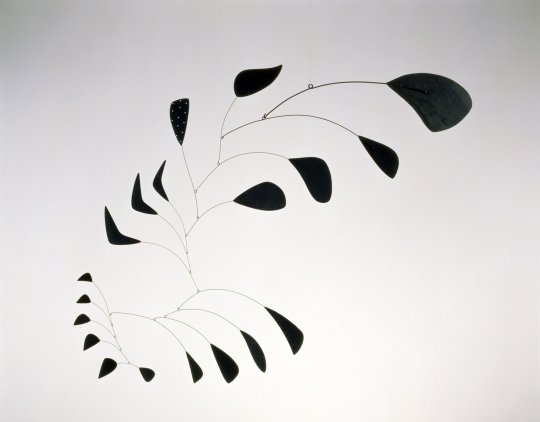
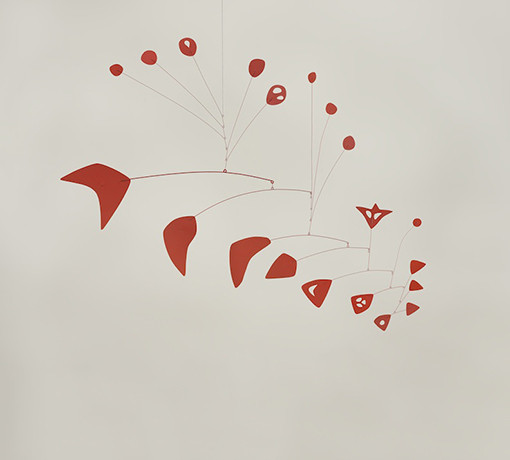





Calder was born in 1898, the second child of artist parents—his father was a sculptor and his mother a painter. In his mid-twenties, he moved to New York City, where he studied at the Art Students League and worked at the National Police Gazette, illustrating sporting events and the Ringling Bros. and Barnum & Bailey Circus. Shortly after his move to Paris in 1926, Calder created his Cirque Calder (1926–31), a complex and unique body of art. It wasn’t long before his performances of the Cirque captured the attention of the Parisian avant-garde.
In 1931, a significant turning point in Calder’s artistic career occurred when he created his first kinetic nonobjective sculpture and gave form to an entirely new type of art. Some of the earliest of these objects moved by motors and were dubbed “mobiles” by Marcel Duchamp—in French, mobile refers to both “motion” and “motive.” Calder soon abandoned the mechanical aspects of these works and developed suspended mobiles that would undulate on their own with the air's currents. In response to Duchamp, Jean Arp named Calder's stationary objects “stabiles” as a means of differentiating them.
Calder returned to live in the United States with his wife, Louisa, in 1933, purchasing a dilapidated farmhouse in the rural town of Roxbury, Connecticut. It was there that he made his first sculptures for the outdoors, installing large-scale standing mobiles among the rolling hills of his property. In 1943, James Johnson Sweeney and Duchamp organized a major retrospective exhibition at the Museum of Modern Art, New York, which catapulted Calder to the forefront of the New York art world and cemented his status as one of the premier American contemporary artists.
In 1953, Calder and Louisa moved back to France, ultimately settling in the small town of Saché in the Indre-et-Loire. Calder shifted his focus to large-scale commissioned works, which would dominate his practice in the last decades of his life. These included such works as Spirale (1958) for the UNESCO headquarters in Paris and Flamingo (1973) for Chicago’s Federal Center Plaza. Calder died at the age of seventy-eight in 1976, a few weeks after his major retrospective, Calder’s Universe, opened at the Whitney Museum of American Art, New York.
(Pace Gallery)
54 notes
·
View notes
Text

ART LIMITED features Bernd Walz with the art work "Pure Light - Study 258". Visit the artist's profile https://www.artlimited.net/18034 Check also the artist's account. Published Thursday 10th, April 2025 at 09:40:51. Art Limited is an artists' community since 2005. For a chance to be featured follow our rules in the profile description of our Instagram account. Featured artists are welcome to respond to any comments posted for their art works. Thank you to our curators for their selections. #light #canon #minimalism #fineart #nonobject #purephotography #microphotography #fantasy #exposure #digital #creation #colours #lightart #purelight #colour #minimalistic #other #contemplation #spectrum #composition #photomicrograph #color #photography #abstract #artcommunity #modernart #abstractart https://www.artlimited.net/18034/art/photography-pure-light-study-258-digital-other-abstract/en/11956966
0 notes
Text
WEEK 7: The Thin Line Between Sexy and Offensive? Or the Revolution of “Tit Out”
Eve, Eden, and the Fall of the Free Nipple

Let’s rewind way, way back to the Genesis of Eden and Eve, where humanity was fresh, raw, and unapologetically bare. The male and female form wasn’t something to hide; it was art. A celebration of divine design (Shaw, 1969).
But time has a habit of turning freedom into taboo. The world evolved, but not in favor of the female form. The same bodies once immortalized in sculptures, paintings, and ancient civilizations became censored, forbidden, and NSFW. Somewhere along the way, society decided that a woman’s chest—the same biological feature found on men—was inappropriate, sinful even. Meanwhile, men's torsos were given a free pass to roam the world, topless and unbothered. Women? Covered up. Restricted. Criticized. (Klinghoffer, 2020).
Welcome to the Digital Age Where "Sexy" Is a Loaded Weapon
Fast forward to today. We live in an era where sexy sells but only when it's on society’s terms. Social media has redefined what it means to be "empowered" vs "objectified," but the rules are still painfully uneven (Suzor, 2019).
A woman posts a picture with a hint of cleavage? Sexualized.A man posts a gym selfie, muscles flexing, abs on full display? Admired.
It takes a mere curve, a hip, a collarbone, the delicate shadow of cleavage for a woman to be deemed “too much.” Meanwhile, men flaunt their shirtless bodies with ease. Want proof? Consider the thirst trap culture. A man posting a print of his bulges or d*** prints are not negatively reacted to most of the time, in which the internet would be “opps, it looks at me first” or “omg that’s big”,.... But a woman even hinting at her equivalent? Scandal. Outrage. A social media witch hunt. (Weiss, 2024).
The negativity surrounding female exposure isn’t just frustrating—it’s an exhausting, centuries-old double standard that refuses to die.


Kendall, Bella, and the Power of the "Unapologetic Nip"
However, some women are challenging this deeply ingrained dynamic—not through protest, but through presence. Enter Kendall Jenner and Bella Hadid, two of the most influential women in fashion, who don’t just wear clothes—they weaponize them.
Both have graced the world’s biggest red carpets, fearless, sheer, and unapologetic. Free the nipple? They said, "We ARE the nipple." To some, they’re simply being sexy, daring, or even worse, considered slutty and attention-seeking. To others like myself, they’re reclaiming the narrative demanding that their bodies be seen on their own terms, not as objects but as statements.
This is not just about wearing sheer dresses—it is about breaking the chain of over-sexualization and selective modesty. It’s about women choosing when and how they want to be seen, not society dictating it for them. Through their bold fashion choices, they redefine femininity—not as something fragile and passive, but as something powerful, something masculine in its confidence and control.


So,... Where are “the tits” in the future?
At the end of the day, the body is just a body until society decides it is not. The rules are uneven, the criticisms unfair, but women everywhere are proving that sexy and empowered are not mutually exclusive. The rise of "Tit Out" is not just about fashion, nor is it a mere rebellion against norms. It is a demand for equal agency over self-representation. If men can exist freely in their skin, so should women without the weight of controversy attached. And whether the world is prepared for that shift or not, one thing is certain: the rules are being rewritten, one unapologetic choice at a time.
References:
Klinghoffer, D 2020, ‘Evolution Can’t Explain Sexual Modesty; Why Not?’, Evolution News, Discovery Institute’s Center for Science and Culture, viewed 24 March 2025, <https://evolutionnews.org/2020/08/evolution-cant-explain-sexual-modesty-why-not/>.
Shaw, AB 1969, ‘Adam and Eve, Paleontology, and the NonObjective Arts’, Journal of Paleontology, vol. 43, no. 5, Paleontological Society, pp. 1085–1098, viewed <https://www.jstor.org/stable/1302418>.
Suzor, NP 2019, ‘Lawless’, Google Books, viewed 23 March 2025, <https://books.google.com.vn/books?hl=en&lr=&id=EjGdDwAAQBAJ&oi=fnd&pg=PR9&dq=with+the+development+of+social+media>.
Weiss, S 2024, ‘Subjectified: Becoming a Sexual Subject’, Wiley.com, viewed 23 March 2025, <https://www.wiley.com/en-us/Subjectified%3A+Becoming+a+Sexual+Subject-p-9781509560196>.
0 notes
